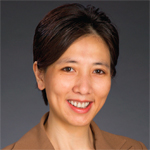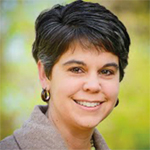Dr. Klepper is on the physical therapy faculty of Columbia University, holds a clinical appointment in the Department of Rehabilitation and Regenerative Medicine at New York Presbyterian Hospital and frequently consults with the pediatric rheumatology team at Children’s Hospital of New York. She has served on multiple ACR and ARHP committees, including the ARHP Executive Committee.
‘As a parent who has raised a child with JIA, I would encourage the next generation of rheumatologists to appreciate the need to foster a true inter-professional model of patient care in treating children with rheumatic diseases.’ —Susan Klepper, PT, MS, PhD
Q: What changes to the field have you witnessed over the course of your career?
A: I have to say, without a doubt, it would be the advances in both the pharmacological management of inflammation and the growing recognition of the importance of both fitness testing and training in children and adolescents with rheumatic diseases.
Q: What advice do you have for the next generation of practitioners?
A: To encourage them to work with children who have rheumatic disease. As a parent who has raised a child with JIA, I would encourage the next generation of rheumatologists to appreciate the need to foster a true inter-professional model of patient care in treating children with rheumatic diseases. Although there has been great progress in the medical management of these diseases, these children and adolescents often need and benefit from PT, OT and other rehab services.
Q: Mentorship is extremely important to the practice of medicine these days. What is the value of that collaboration?
A: I’ve benefited from the wisdom and guidance of many mentors during my years as an ARHP member. Probably the most important lessons were to maintain focus on what was important to me as a rheumatology health professional and to be persistent in my own education.
ARHP Distinguished Scholar Award
 Linda Li, BSc (PT), MSc, PhD, Associate Professor and Harold Robinson/Arthritis Society Chair, University of British Columbia, Vancouver; Senior Scientist, Arthritis Research Canada
Linda Li, BSc (PT), MSc, PhD, Associate Professor and Harold Robinson/Arthritis Society Chair, University of British Columbia, Vancouver; Senior Scientist, Arthritis Research Canada
Background: In the late 1990s, Dr. Li had questions. She was drawn to arthritis because of the diagnostic and treatment challenges, but this was before powerful new medications and biologics arrived.
“We were struggling with the whole idea of how to manage the chronic condition,” she says. “Do we have the person see a specialist alone? Or a multi-disciplinary team? What is the best approach to manage?”



